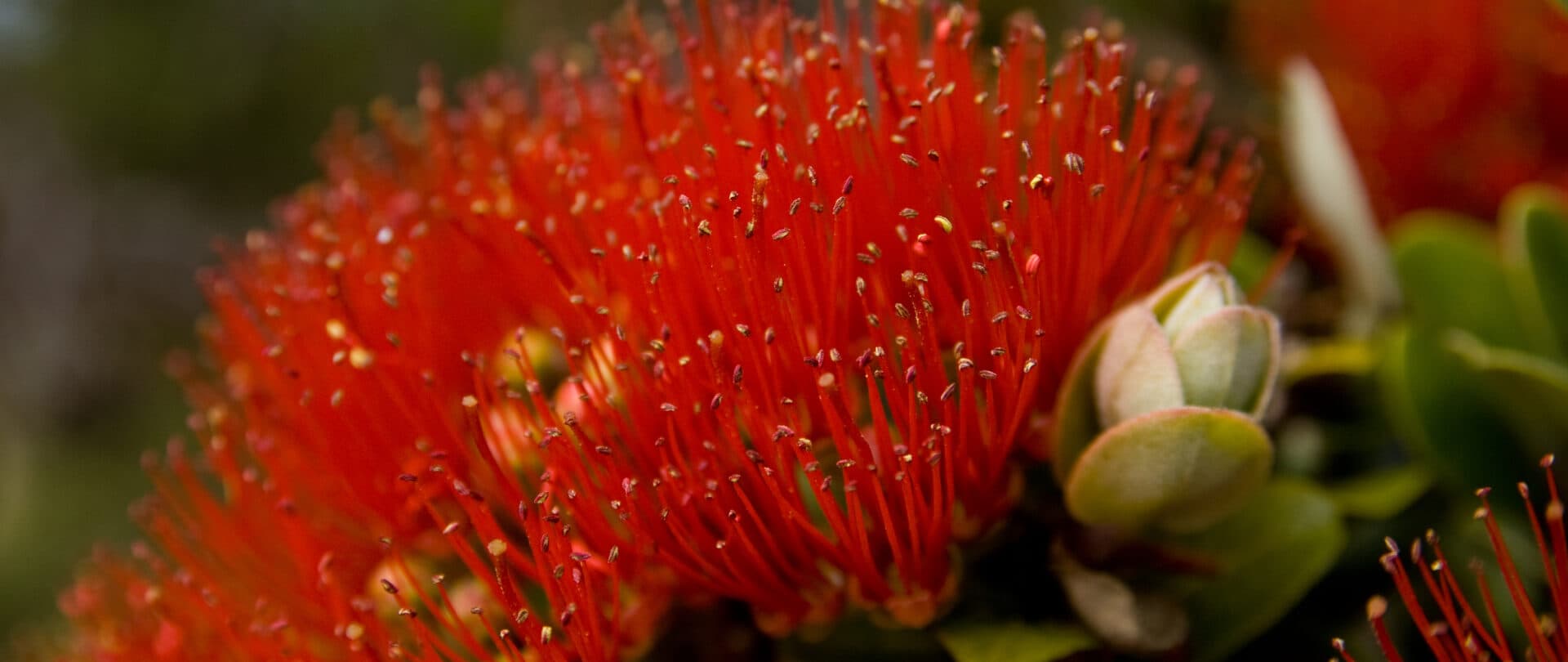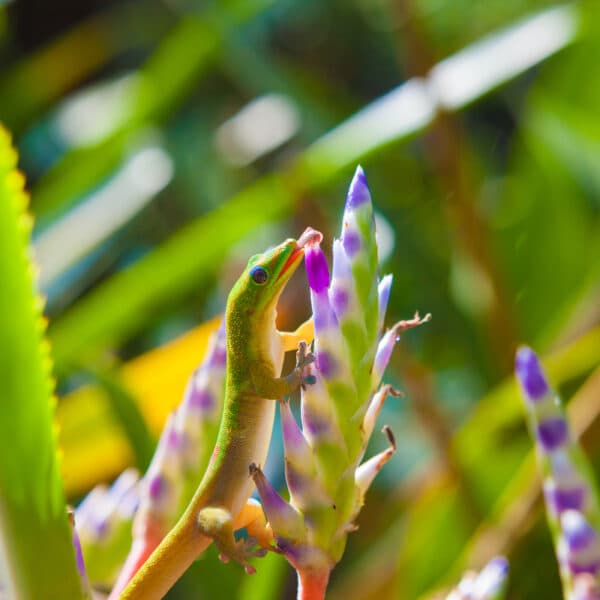
Tragedy in Bloom
Saving the ‘ōhi‘a lehua tree
Indigenous to the Hawaiian Islands, the ‘ōhi‘a lehua tree is abundant here, but found nowhere else in the world. The blossom considered to be sacred to Pele, the volcano goddess in Hawaiian folklore, is—not surprisingly—the island’s official pua (flower). The unique “pom-pom shaped” flower gets its fluffy appearance from masses of stamens that extend from it. The blossoms are typically red, pink, orange or yellow in color with the deep red being most prevalent by far. Tolerating a broad range of conditions from soil to temperature and rainfall the ‘ōhi‘a lehua tree grows equally well at sea level as it does at elevations of up to 8,000 feet. In addition to its beauty, the ‘ōhi‘a lehua also produces a delicious honey, one of the few “honey” trees native to the Hawaiian Islands.
To view a profusion of these brilliant and delicate blossoms in a variety of colors, make your way to the Hawai‘i Volcanoes National Park on the southeastern end of the island. Be forewarned—legend says that if you pick a blossom, it will rain. The rain is said to be the tears of once separated young lovers, ‘Ōhi‘a and Lehua. Spurned by the handsome ‘Ōhi‘a, Pele, in a jealous rage, transformed him into a tree. Lehua was devastated. Out of pity and guilt, Pele turned Lehua into a magnificent flower and placed her upon the ‘ōhi‘a tree. Separating these reunited lovers in their modern form is highly discouraged.
In 2010, a destructive fungal disease, Rapid ‘Ōhi‘a Death (ROD), was first discovered in Puna and was later identified as two fungal species within the genus Ceratocystis. The deadly disease kills the ‘ōhi‘a trees quickly (hence the name) and spreads easily. ROD has been discovered on other Hawaiian Islands. The fungus enters the tree through a wound and spreads to the vascular system depriving the tree of water. You can help stop the spread by staying on established trails and taking the time to clean your shoes and gear before and after entering forests. Do this by brushing off all the soil then spray with 70% rubbing alcohol.
You May Like
More from Local Vibe

Local Vibe
Green Day
A gecko, not Geiko

Local Vibe
Do I Look Puffy?
The Blow Up Fish

Local Vibe
Paradise Donuts
Malasadas are a Portugese treat that you must seek out in Hawai‘i

Local Vibe
Birdʻs Eye View
The Japanese white-eye is a charming creature that is sure to catch your eye

Local Vibe
No Equipment Necessary
Catch a wave old-school style

Local Vibe
What a Shrimp!
The banded coral shrimp lives to keep reef fish clean

Local Vibe
Stay Grounded
Donʻt get caught being high makamaka
